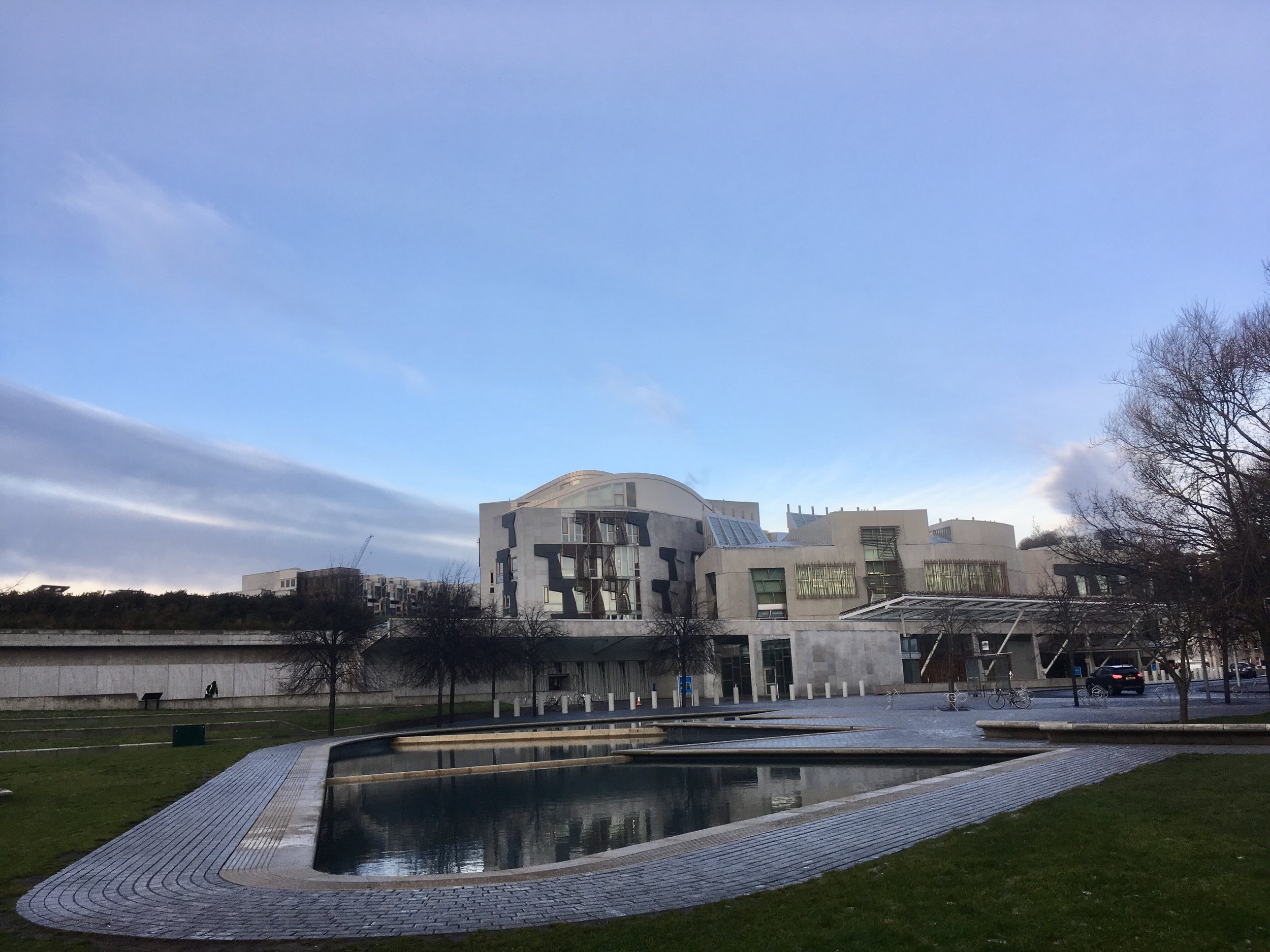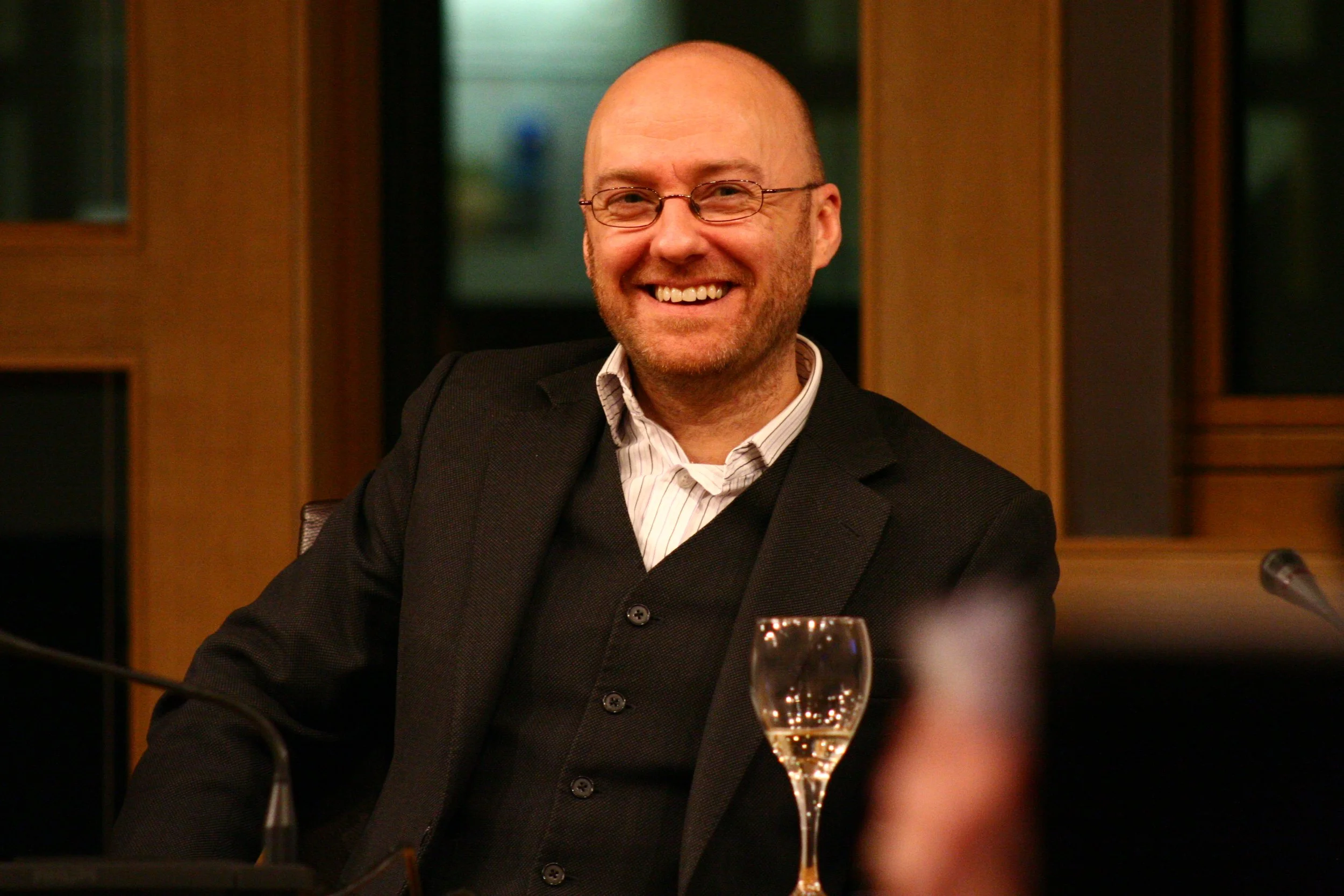2014: When Equal Marriage Came to Scotland
To celebrate LGBT History Month, I want to look back at an important moment from Scotland’s recent history. Eight years ago this month, on the 4th of February 2014, the Scottish Parliament passed a momentous piece of legislation that campaigners had been working towards for decades.
It was called the Marriage and Civil Partnerships Bill (Scotland), and it finally granted people equal marriage rights regardless of gender. Although same-gender couples had been able to have civil partnerships since 2005, people had long campaigned for equal recognition of their relationships under the law – the right for their marriages to be called marriages and treated as such.
The Scottish Parliament. Image: Hannah Mackay Tait
The law passed in the Scottish Parliament by 105 votes to 18 with no abstentions – not only a strong signal of Scotland’s support for LGBTQ+ rights, but a powerful sign of how much the country had changed in a relatively short space of time. When the modern Scottish Parliament was set up in 1999, around half of Scots thought that same-gender relationships were “always or mostly wrong”. By 2015, that proportion dropped to around 18% – still far too many, but an important indicator that attitudes had been changing.
Changing attitudes to same-gender relationships in Scotland. Source: Scottish Social Attitudes Survey 2015
As well as permitting civil marriage, the law included provisions for religious groups and clergy on all sides of the debate, meaning that supportive congregations and celebrants can sign up to perform same-gender ceremonies, but have no obligation to do so. Many religious and belief groups, from the Scottish Episcopal Church and the Humanists to the Quakers and the Liberal Jewish Community, now perform same-gender marriages.
The day the bill passed, I sat at home watching the debate online with some friends. People my age and older in Scotland grew up in a society where queer people were rarely discussed, and if they were it was often in discriminatory terms. Our teachers weren’t equipped – or permitted – to support queer kids, or safe to be out at work themselves. We grew up being told HIV was a death sentence, long after effective treatments emerged and that stopped being true. We grew up in an era when it was still scandalous when a celebrity was outed in the press – not because they had been outed, but because they were queer.
Watching our Parliament debate this law felt like the dawn of a new age. There was very little opposition in the chamber, and an acknowledgement that equal marriage was the settled will of the people. Protests outside were minimal, while supporters of the bill gathered in their hundreds. A double rainbow even appeared in the sky above the Parliament on the day of the vote, a cinematic touch that sounds too outlandish to be true!
The rainbows that appeared over Edinburgh that day, photographed from my window. Image: Hannah Mackay Tait
The first same-gender weddings took place on Hogmanay 2014, attended by the then newly appointed first minister, Nicola Sturgeon, and Patrick Harvie, co-leader of the Scottish Greens. Patrick Harvie, who is openly bisexual himself, has been campaigning for LGBTQ+ rights since he first entered the Scottish parliament in 2003, when he immediately proposed civil partnership legislation. The Scottish Green party he helps to lead remains the most outspoken advocate for queer and trans rights in mainstream Scottish politics to this day.
Patrick Harvie, co-leader of the Scottish Greens. Image: Ric Lander, CC BY-SA 3.0, via Wikimedia Commons
Equal marriage is now the norm in Scotland, to the point that even the phrase “equal marriage” has started to sound a little bit retro. In the years since it passed, Scotland has also introduced LGBTQ-inclusive education to the school curriculum, the first country in the world to do so. Although we always have more work to do on equality and anti-discrimination, as all societies do, today’s Scottish young folk are growing up in a very different world. They have out queer teachers, and they’ve seen LGBTQ+ people succeed in politics, from Patrick Harvie in the Greens to the former Scottish Conservative leader, Ruth Davidson. They get to see their pop idols proudly sing queer love songs on TV without hiding who they are. They get to grow up knowing from the start that, whoever they might fall in love with, they have the right to marry them.
First Minister Nicola Sturgeon leads a Pride parade in Glasgow in 2018. Image: Delphine Dallison, CC BY-SA 4.0, via Wikimedia Commons
And that’s the real legacy of equal marriage in Scotland – not just the many longstanding couples who were finally able to formalise their relationship in the way they dreamed of, but the message it sends to everyone who comes next.
***
Thanks for reading! Feel free to get in touch if you have any questions or suggestions for topics you’d like to see me write about here. If you enjoy reading these posts, please consider sharing them with other people and following me on instagram. You can also leave something in my tip jar if you’re able. I’ll be back with another post soon! Hannah x




